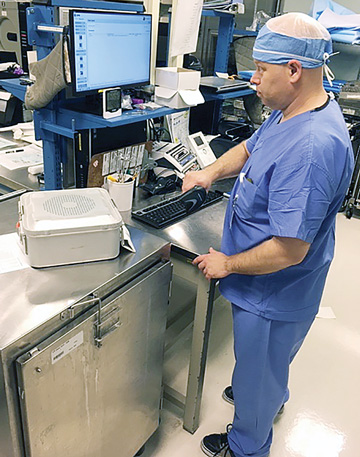Instrument tracking systems do a lot more than ensure that only properly decontaminated, assembled and sterilized instruments make it back to your ORs. They can track instruments and their locations at any given time, link sets and supplies to procedures and patients, assign already sterile trays to the morning cases and dirty trays to the afternoon cases so surgeons are never left waiting. They can even measure staff productivity.
"We can find individual trays in an instant, including those we share with our sister hospital," says Sara Houston, BSN, RN, CNOR, HN-BC, a staff nurse at Valley Health System in Ridgewood, N.J.
Valley Health's system tracks trays at every reprocessing step and assembly phase, so staff can pinpoint where they are in the process and get an idea of when they'll be ready for the next case.
When surgical techs pull instruments and supplies for procedures, they scan barcodes on a case cart and then scan each instrument tray they place in the cart. The tracking system links the cart and its contents to a patient's identification number, and to the procedure and OR in which it will be used. The system prints out a count sheet that lists every item needed for a case and a label that sticks to the outside of instrument trays. The label notes the name and number of the tray, the case in which it will be used and missing supplies.
Staff can log into the system to determine when and where instruments were used, and on which patients. "That ability to trace back to specific details of instrument use is invaluable when conducting root-cause analyses of post-op infections," says Ms. Houston.
.svg?sfvrsn=be606e78_3)

.svg?sfvrsn=56b2f850_5)